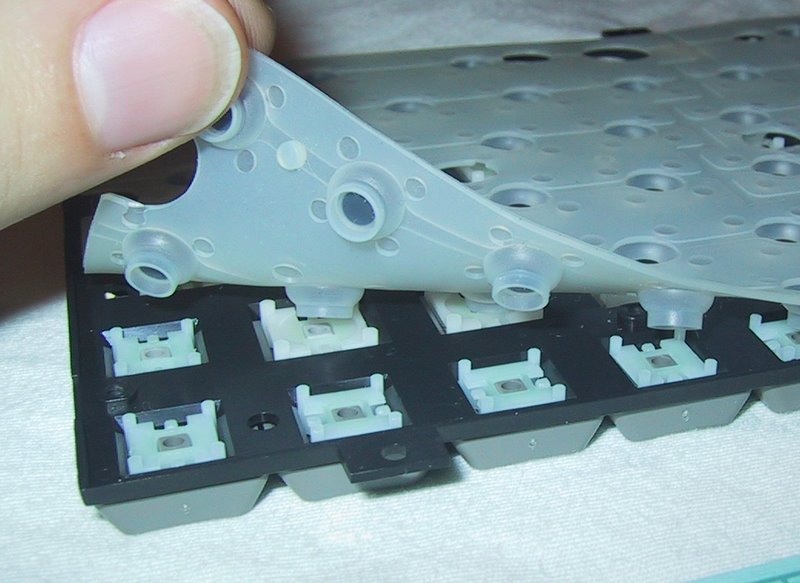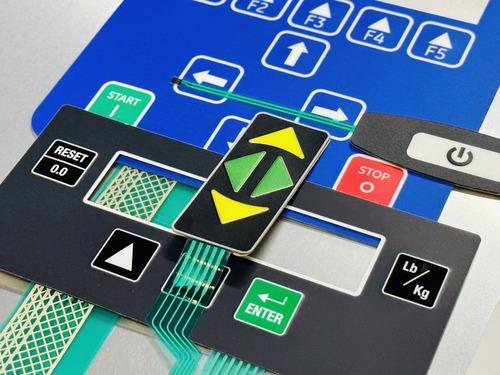Figure out How Membrane Switches Are Customized to Meet Particular Layout Demands
Figure out How Membrane Switches Are Customized to Meet Particular Layout Demands
Blog Article
Membrane Layer Switches Explained: A Comprehensive Overview to Their Advantages
Membrane switches over stand for a flexible and sophisticated option for developing interface across a variety of fields. Their multilayered design not just ensures performance with basic pressure yet likewise offers considerable benefits, such as durability and personalization. As sectors increasingly seek effective and trustworthy control user interfaces, understanding the specific advantages and applications of membrane layer switches over comes to be crucial. The complexities of their design and application existing special obstacles that merit better exam. What elements should be thought about to completely utilize their potential in modern applications?
What Are Membrane Layer Switches?

When pressure is put on the membrane button, the layers make contact, completing an electric circuit. This easy device permits a large range of applications, from consumer electronic devices to industrial machinery. Membrane switches are frequently created to be water resistant and resistant to dust and impurities, making them ideal for environments where longevity is necessary.
Furthermore, the versatility of the materials made use of in membrane switches over promotes ingenious styles that can satisfy various shapes and dimensions. This versatility contributes to their popularity in diverse areas, including medical gadgets, vehicle controls, and home appliances. In general, membrane switches represent a crucial component in modern user interface technology, bridging the space in between customers and electronic systems.
Trick Benefits of Membrane Switches
Among the myriad of individual interface choices available, membrane layer changes attract attention for their distinct mix of advantages. One of the primary advantages is their lightweight and portable layout, which enables for combination right into a large range of devices without adding significant mass. This is particularly beneficial in applications where space is restricted.
In addition, membrane switches offer sturdiness and resistance to ecological aspects. They are typically created with products that can hold up against dampness, dirt, and different chemicals, making them suitable for harsh conditions. This longevity contributes to a much longer life-span contrasted to traditional mechanical buttons.
One more considerable advantage is the versatility in modification. Membrane layer switches can be published with various graphics, shades, and appearances, permitting tailored designs that meet details branding or functional needs. This adaptability extends to the number of layers and circuit choices, supplying engineers with several setups.
Moreover, the tactile feedback supplied by some membrane switches improves user experience, making them a lot more intuitive to run. Lastly, the simplicity of cleaning and upkeep additionally strengthens membrane layer switches as a useful option in both customer and commercial applications. Membrane Switches. In general, these crucial benefits make them a preferred solution for many developers and manufacturers
Applications in Various Industries
How do membrane layer switches find their place across diverse markets? Their versatility and capability make them important elements in industries varying from medical care to consumer electronics. In clinical gadgets, membrane layer switches are utilized for their simplicity of cleansing and resistance to contamination, making certain health in atmospheres where sterility is important.
In the customer electronic devices sector, these switches supply sleek, easy to use interfaces that improve item looks while preserving durability against wear and tear. Automotive applications gain from membrane switches over too, where they are made use of in dashboards and control board, using reputable performance in tough conditions.
Furthermore, industrial machinery utilizes membrane buttons for control board as a result of their toughness, capacity to stand up to extreme atmospheres, and personalized layouts that cater to particular operational demands. The food industry leverages membrane layer switches for their convenience of usage and resistance to spills, ensuring functional effectiveness in fast-paced setups.
Inevitably, the flexibility of membrane changes across these diverse applications emphasizes their vital duty in contemporary innovation, improving customer interaction while fulfilling industry-specific requirements. Their proceeded advancement promises more assimilation into arising fields and ingenious items.
Design and Modification Choices
The style and modification choices offered for membrane switches are crucial for customizing interfaces to fulfill specific user needs and aesthetic preferences. These switches can be made in various forms, sizes, and formats, permitting seamless assimilation right into varied applications. The versatility in layout means that manufacturers can create distinct interfaces that boost functionality and keep brand name identity.
Custom shades, textures, and graphics can be used to the surface of the membrane switch, giving an opportunity for branding and customer involvement. In addition, backlighting alternatives, such as LED lighting, can be integrated to enhance visibility in low-light problems, hence enhancing performance.
Functional aspects can also be personalized, consisting of tactile comments and actuation force, which can be adapted to match various user communications. The option of materials, such as polyester or polycarbonate, enables variants in longevity and environmental resistance, satisfying the details needs of various sectors.
Eventually, the comprehensive layout and modification capacities of membrane layer switches enable firms to develop user-friendly and aesthetically attractive user interfaces, making sure that their products satisfy both practical and visual demands successfully. Membrane Switches.
Considerations for Execution
Applying membrane switches over calls for mindful factor to consider of various aspects to guarantee optimum performance and individual experience. Among the main considerations is the intended application atmosphere. Factors such as direct exposure to dampness, extreme temperatures, and chemical substances can dramatically affect the switch's performance and durability. Selecting materials that endure these problems is important.

One more important element is the button's design and layout. Guaranteeing that the responsive comments and actuation pressure straighten with user expectations improves use. Performing user screening can give important understandings right into the ideal style.
Furthermore, compatibility with my sources digital components need to be analyzed. original site The switch's circuitry ought to align with the total system design, making sure dependable signal transmission and reducing interference.
Moreover, manufacturing methods and prices must be examined. The selection in between personalized layouts and typical models can lead and affect both spending plan time.
Lastly, think about repair and maintenance. Membrane layer buttons may need certain cleansing and care procedures to preserve their look and performance over time. By addressing these factors to consider, companies can carry out membrane buttons that satisfy their functional demands while giving a positive customer experience.

Final Thought
In conclusion, membrane layer switches represent a versatile and resilient control interface appropriate for a wide variety of applications across multiple industries. Membrane Switches. As innovation proceeds to progress, the significance of membrane layer switches in modern gadgets stays significant, providing both capability and aesthetic allure.
Membrane layer switches over stand for a sophisticated and flexible solution for developing user interfaces throughout a selection of industries.Comprehending the fundamental components of modern electronic user interfaces, membrane layer buttons are a type of customer interface gadget that are composed of versatile, thin layers of product. On the whole, membrane layer changes stand for a vital aspect in modern user interface technology, bridging the gap in between users and digital systems.
Amongst the myriad of individual interface alternatives available, membrane switches over stand out for their unique mix of advantages.The layout read and personalization options available for membrane switches are vital for customizing user interfaces to fulfill specific user needs and aesthetic choices.
Report this page